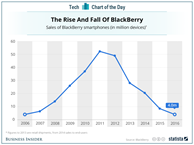
At some point in our careers, nearly all of us have heard or shared the story of what happens to a frog if you put it in a pot of water and slowly increase the heat. Because the frog’s body adapts to the changing water temperature, it doesn’t realize it is slowly boiling to death.
The story is sad, and it is cruel. The irony is that the frog has the ability to leap out of the water at any point to save itself, but because it doesn’t fear or sense the risk, the frog ultimately meets its demise. Such is the danger with complacency.
Complacency has the capacity to “kill” companies and leaders. It can stunt growth, limit effectiveness, and even lead to becoming obsolete. Leaders and companies who don’t monitor signals of change in their environment, who don’t proactively innovate or disrupt themselves, or who believe they don’t have competition are at the greatest risk of becoming complacent. They are at the greatest risk of being bypassed, losing market share, or being disrupted by something unexpected. Think about Blockbuster, Kodak, or even Blackberry:
- Blockbuster truly underestimated the impact of the entry of Netflix into their market. In fact, they had an opportunity to partner with Netflix when it was just starting out. They dismissed the idea, falling back instead on their presence and strategy in the retail market. When Blockbuster realized that Netflix and similar companies were gaining market share, they developed change strategies, but none gained enough support to sustain the organization.
- Kodak had the new, innovative digital technology in-house. They had anticipated the need for change. However, they had a five-year implementation timeline, and when they realized they were being beaten to the market, they weren’t agile enough to be able to adjust.
- Blackberry (RIM) was too slow to adapt and continued to rely on their corporate appeal and security to maintain their market position. They discounted the rise in devices for personal use and the infiltration into the corporate market as well. The rise and fall of Blackberry shows the potential peril in complacency (see graphic below).

In contrast, leaders and companies who have a fear of what might happen or change tend to be more alert and future ready. Some may even have a little paranoia that someone, somewhere is working to be better or to beat them at their own game. In this case, the fear or the paranoia keeps them sharp. They look at organizations who enter the market with a critical eye – considering the niche they are exploiting, the value they are delivering, and how those things compare to their own. Fear is natural and can be a healthy tool. Consider this take on fear from a world-renowned adventurist.
As Alison Levine, the leader of the first US Women’s Expedition of Mount Everest states, “Fear is what prevents me from becoming complacent. Fear is actually a useful tool. You have to be able to act and react quickly when environments are constantly shifting and changing.”
So how can you fight complacency to avoid becoming the boiling frog?

- Ask hard questions. What is your competitive advantage? Personally? Organizationally? Is there any area where you are coasting? Do you have a market differentiation (you are truly the only one doing what you do – or a natural strength you bring) or a competitive differentiation (you do something others do, but you do it better or differently)? What are you doing to ensure that you are retaining that differentiation? How are you sharpening your approach? Deepening your expertise? Becoming better every day? Your hard questions may be different, but ask them of yourself and others.
- Measure what matters. Identify those things that are indicators of what matters for what you do – your client engagement, your employee engagement, your bottom line, top line, market penetration, adoption and usage of innovations, etc. Using data and analytics alone won’t tell you that you are or aren’t becoming complacent, but it can provide some warnings. Similar to someone who doesn’t check their blood pressure, blood sugar, cholesterol counts, etc., the data can surface questions you might not ask if you hadn’t been given notice that something is a little off.
Be a strong leader. Jump out of the pot of boiling water! Fight complacency for yourself, your team, and your organization, and start today!

